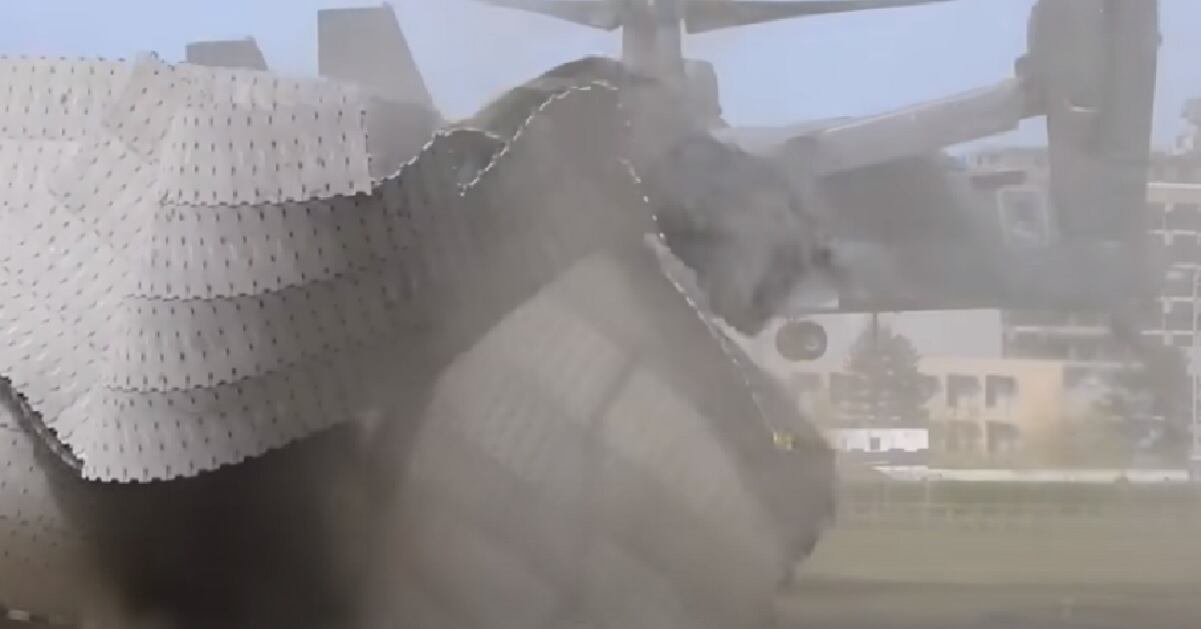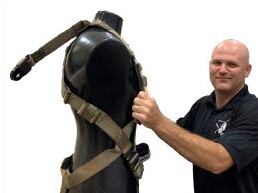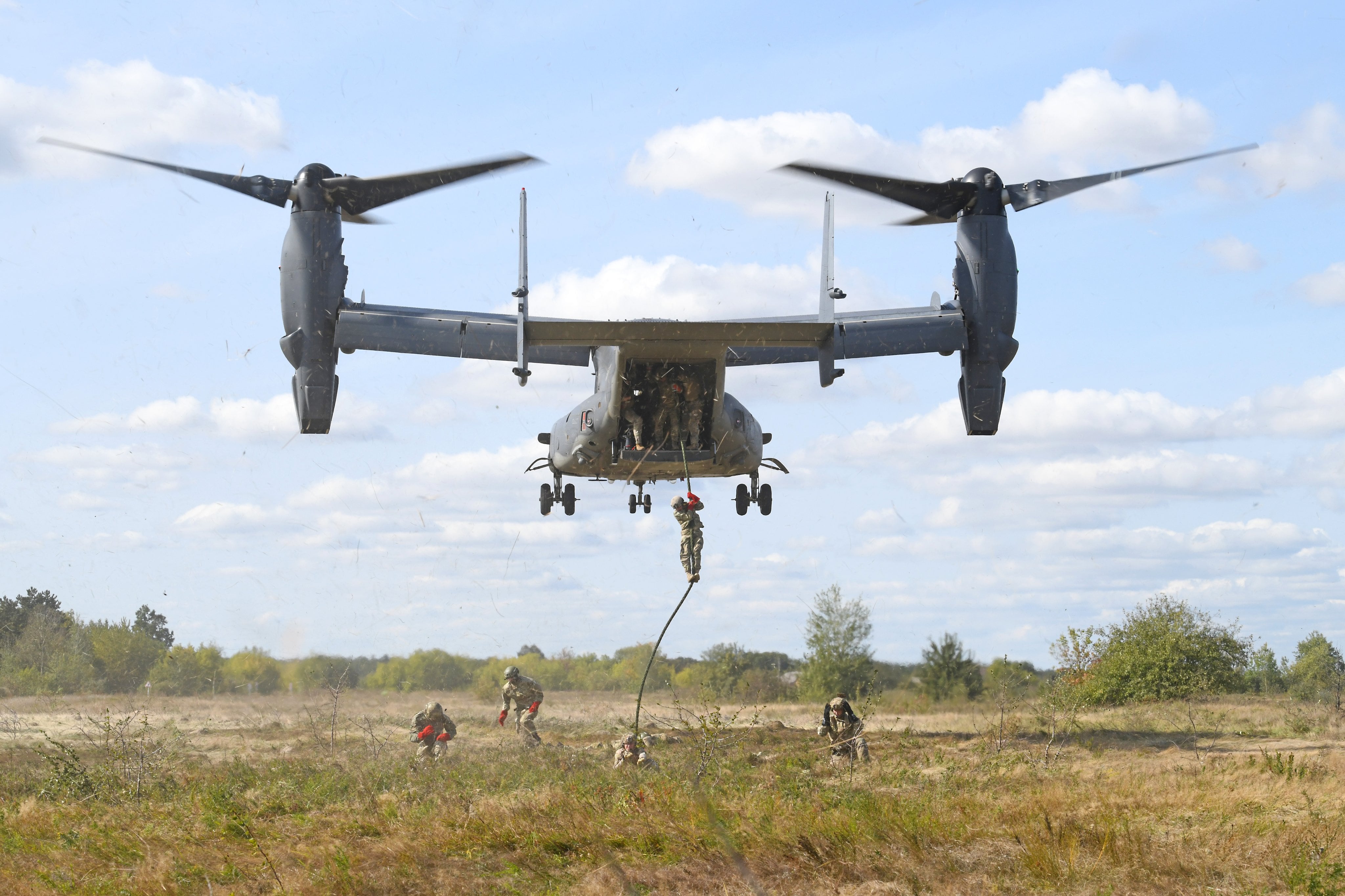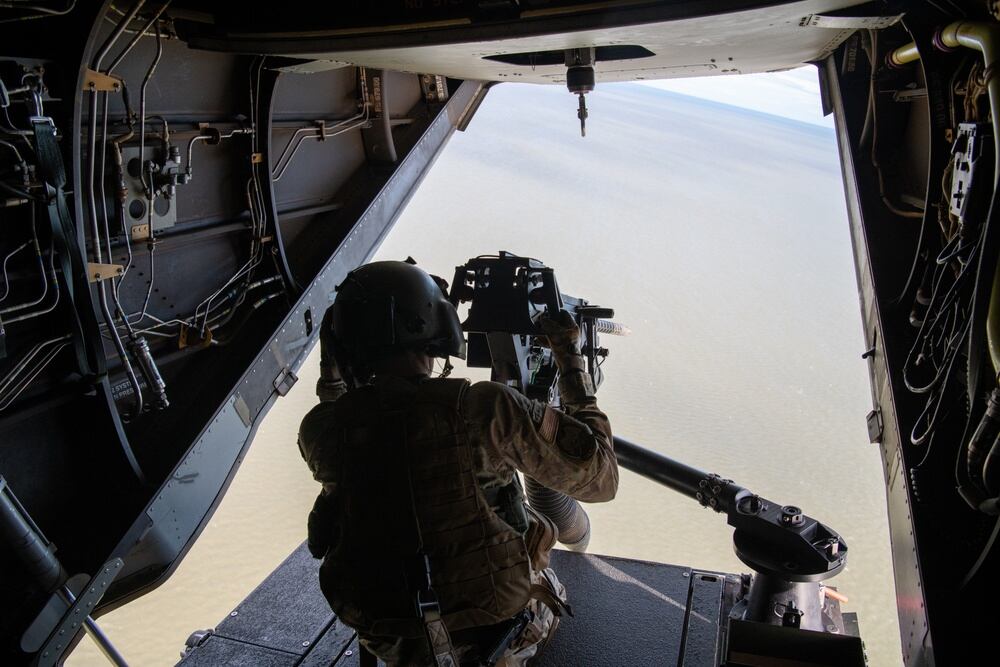Harnesses designed to keep airmen safely inside the CV-22B Osprey, the iconic special operations tiltrotor aircraft, could instead be putting their lives in jeopardy, an enlisted aviator told his superiors in an anonymous report in July.
Five months and one safety investigation later, the military says it stands by the harness and will continue to use it.
Flown to quickly move special ops troops and resources in and out of combat zones, Ospreys are known for their twin propellers that offer the vertical takeoff, landing and hovering abilities of a helicopter as well as the long-range flight of a fixed-wing aircraft.
RELATED

Two of the aircraft’s four crew positions are manned by enlisted special mission aviators. One sits between the pilots in the cockpit, while the other remains at the tail.
Special mission aviators keep others in the back of the rotorcraft safe, man the .50 caliber machine gun mounted at the ramp, clear places to land and work the fast rope and hoist for infiltration and exfiltration missions.
But at least one airman has concerns about the restraints used while on tail scanner duty, warning of potential injuries or even death.
In a July 6 Airman Safety Action Program report, the airman said the CV-22′s Advanced Crew Tether System harnesses prevent special mission aviators from safely keeping watch of the ground outside the aircraft.
Air Force Times obtained the report through a Freedom of Information Act request for fiscal 2021 ASAP submissions. The program allows airmen to anonymously document any incident that falls short of a formal safety report, from smaller inconveniences to broad flight problems or future concerns.
The airman said they can only look straight out of the aircraft, not to each side, without risking falling out.
“I have to choke myself out to barely get a scan off the tail,” said the airman, an AFSOC member stationed at RAF Mildenhall in England. “The other option is loosening the strap, and risk falling out [of] the aircraft and being dragged by the neck.”
The Air Force approved ACTS harnesses for the CV-22 in 2016, and the restraint has since been installed on all Ospreys. Unlike earlier models, its design can support an airman’s weight while suspended or restrained, First Lt. Melissa Crisostomo, an AFSOC spokesperson, told Air Force Times on Nov. 4.
CV-22s are the only Air Force platform that use the ACTS harness. The service owns about 50 Ospreys at bases around the world.

The airman argued that Osprey units are worse off with the harness than with the previous gunner’s belt, which clipped to points inside the aircraft so aviators wouldn’t tumble out.
Mark Trexler, an owner of harness designer Survival Innovations, said in an undated release on the company’s work with the Navy that traditional gunner’s belts needed constant adjustment. They were hard to keep on while safely and comfortably moving around an aircraft, he said.
The current harnesses aren’t an improvement, the airman said.
“The harness restricts movement [in] the cabin, and its attachment point at the back of the neck restricts movement depending on what side of the aircraft you are attached to,” he said.
Enlisted airmen also run into problems when trying to wear the harness with night vision goggles and a mask that protects against chemical and biological agents.
“With the issues of being choked whenever you pull against the restraint … adding more material between your neck and the [survival] vest makes it worse,” the report said. “You go from being able to move your head to not being able to move your head at all. You have to turn your whole torso, which isn’t conducive to tail scanner duties that require mobility.”
He suggested redoing the current harness to attach to the lower back of the vests, buying a new harness designed to work with body armor vests, or getting a vest that better fits the ACTS harness.
“The harness provides a significant flight safety risk,” the airman wrote. “It is just a matter of time [until] one of us incidentally falls out of the aircraft and results in a fatal casualty.”
RELATED

Liz Mildenstein, a spokesperson for the V-22 joint program office, told Air Force Times on Wednesday that the Osprey’s aircrew survival vests meet the fleet’s mission requirements.
AFSOC has investigated the complaint but disputes pieces of the safety report, as does the V-22 joint program office run by the Navy.
The command dispatched a team to look into the issues raised by the airman and his unit — likely the 7th Special Operations Squadron — and decided no changes were needed.
“Continued use of the ACTS harness, along with reinforced proper usage, remains the safest course of action to protect our airmen at this time,” Crisostomo said.
The report alleged that the tether carries a warning against wearing it for longer than two hours at a time, or it can lead to back and neck damage. Crisostomo said an expert who inspected one of the harnesses in a CV-22 didn’t find such a label.
RELATED

The airman also claimed the Navy has reports documenting the harness’s potential physical hazards. Mildenstein refuted that assertion.
The harness is fully qualified for use, she told Air Force Times on Wednesday.
Osprey program officials are “not aware of any specific V-22 reports that highlight physiological effects of the harness on the human body,” she said.
While airmen have complained about the harness, Crisostomo added that AFSOC does not have any reports of special mission aviators injured by it.
“We are always striving to provide the safest and effective flight equipment to aircrews and are actively working to develop and field improvements to the CV-22 aircrew restraint system,” she said.
Rachel Cohen is the editor of Air Force Times. She joined the publication as its senior reporter in March 2021. Her work has appeared in the Washington Post, the Frederick News-Post (Md.), Air and Space Forces Magazine, Inside Defense, Inside Health Policy and elsewhere.





